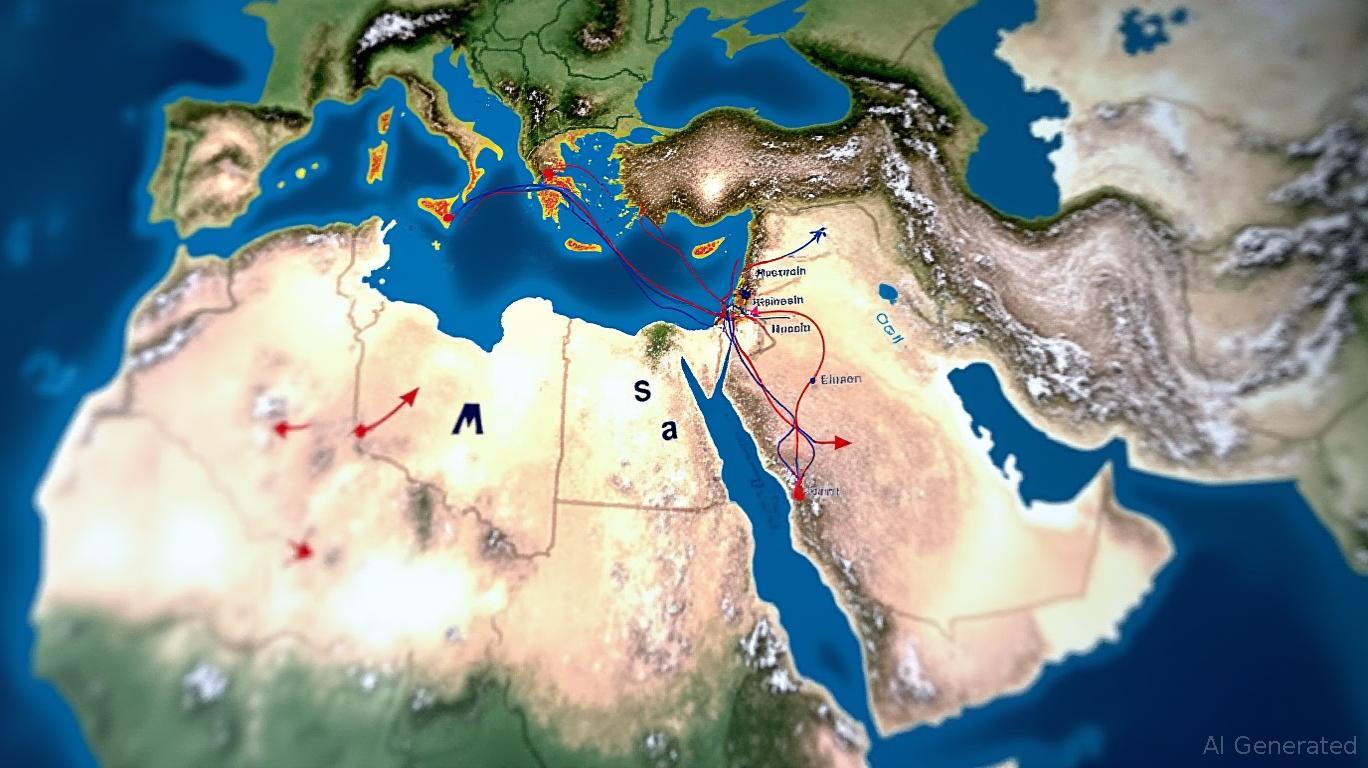Geopolitical Tensions in the Middle East: Navigating Risks and Identifying Hedging Opportunities in Defense and Infrastructure
The Middle East has become a focal point of geopolitical instability in 2025, with conflicts between Israel and Iran, U.S. military actions targeting Iranian nuclear facilities, and airspace closures stretching from Syria to Iraq. These developments have severely disrupted global air travel, forcing airlines to reroute flights, incur higher costs, and cancel services. While airlines grapple with operational and financial challenges, investors can capitalize on the resulting opportunities in defense, infrastructure, and cybersecurity sectors.
The Airline Sector's Struggles Amid Rising Geopolitical Tensions
The escalation of Middle Eastern conflicts has triggered widespread airspace closures, rerouting demands, and increased safety risks. Airlines such as Emirates, Qatar Airways, and Lufthansa have suspended or reduced flights to hubs like Dubai and Tel Aviv, while reroutes through Egypt and Saudi Arabia have added hours to transcontinental journeys. For example, flights from London to Hong Kong now face delays of up to two hours due to detours, inflating fuel costs and crew fatigue.

The compounded effect of Middle Eastern and Russian airspace restrictions has left airlines with limited options. Finnair, for instance, is restructuring its network after losing access to trans-Siberian routes, while Lufthansa reports extended flight durations to Tokyo and Seoul. Analysts estimate that rerouted flights could cost airlines $5–7 billion annually in additional fuel and operational expenses.
Defense and Infrastructure: Key Sectors for Geopolitical Hedging
Amid these challenges, defense and infrastructure stocks are emerging as critical hedging tools.
Defense Contractors: A Direct Play on Regional Conflict
The heightened demand for air defense systems,
, and cybersecurity measures has bolstered companies like Lockheed Martin (LMT) and Raytheon Technologies (RTX).Lockheed Martin (LMT): Producer of F-35 fighter jets and LRASM anti-ship missiles, LMT reported a 4% revenue increase in Q1 2025 to $18 billion, with EPS rising 13% to $7.28.
Raytheon Technologies (RTX): Leader in Patriot missile defense systems, RTX saw Q1 revenue grow 5% to $20.3 billion, with adjusted EPS up 10%.
Boeing (BA): Benefiting from military contracts and commercial aircraft demand, BA's backlog stands at $545 billion, including orders for its 737 and 777X models.
Infrastructure Plays: Building Resilience Against Disruption
The need to strengthen energy grids, secure supply chains, and develop hardened infrastructure has fueled demand for companies like General Dynamics (GD) and Curtiss-Wright (CW).
- General Dynamics (GD): A key player in submarine construction and combat vehicles, GD's Q1 revenue surged 13.9% YoY to $8.8 billion, with a robust $88.7 billion order backlog.
- Curtiss-Wright (CW): Supplier of aerospace and defense components, CW raised its full-year revenue guidance to 8-9% growth after Q1 EPS rose 34%.
Aviation ETFs: Diversified Exposure to Defense and Aerospace
Investors seeking broad exposure to the sector can turn to ETFs:
- iShares U.S. Aerospace & Defense ETF (ITA): Tracks defense giants like LMT, RTX, and Boeing.
- SPDR S&P Aerospace & Defense ETF (XAR): Offers diversified holdings in aerospace and defense firms.
- SPDR S&P Infrastructure ETF (XINF): Focuses on infrastructure projects critical to energy and security resilience.
Cybersecurity and Energy: Mitigating Secondary Risks
Geopolitical instability also drives demand for cybersecurity and energy infrastructure:
- Cybersecurity Firms: Palo Alto Networks (PANW) and CrowdStrike (CRWD) are critical for defending critical infrastructure against cyberattacks.
- Energy Infrastructure: Schlumberger (SLB) and Cheniere Energy (LNG) are well-positioned to address energy supply risks.
Risks to Avoid and Hedging Strategies
- Avoid Middle Eastern Energy Stocks: Companies like Saudi Aramco face dual risks of sanctions and physical conflict.
- Hedge with Gold and Inverse Oil ETFs: GLD offers a safe haven, while DBO (inverse oil ETF) can mitigate oil price spikes.
Final Recommendations
Investors should:
1. Buy: Defense leaders like LMT, RTX, and BA, along with cybersecurity firms PANW and energy infrastructure stocks like SLB.
2. Hedge: Use GLD for portfolio diversification and DBO to offset oil-related risks.
3. Avoid: Middle Eastern energy stocks and single-country ETFs (e.g., iShares MSCI Israel Capped ETF).
The Middle East's geopolitical volatility presents a clear divide: while airlines suffer, defense and infrastructure firms thrive. By focusing on resilient sectors and hedging tools, investors can navigate this landscape while positioning themselves for long-term gains.
As the region's conflicts persist, the message is clear: invest in preparedness.

Comments
No comments yet